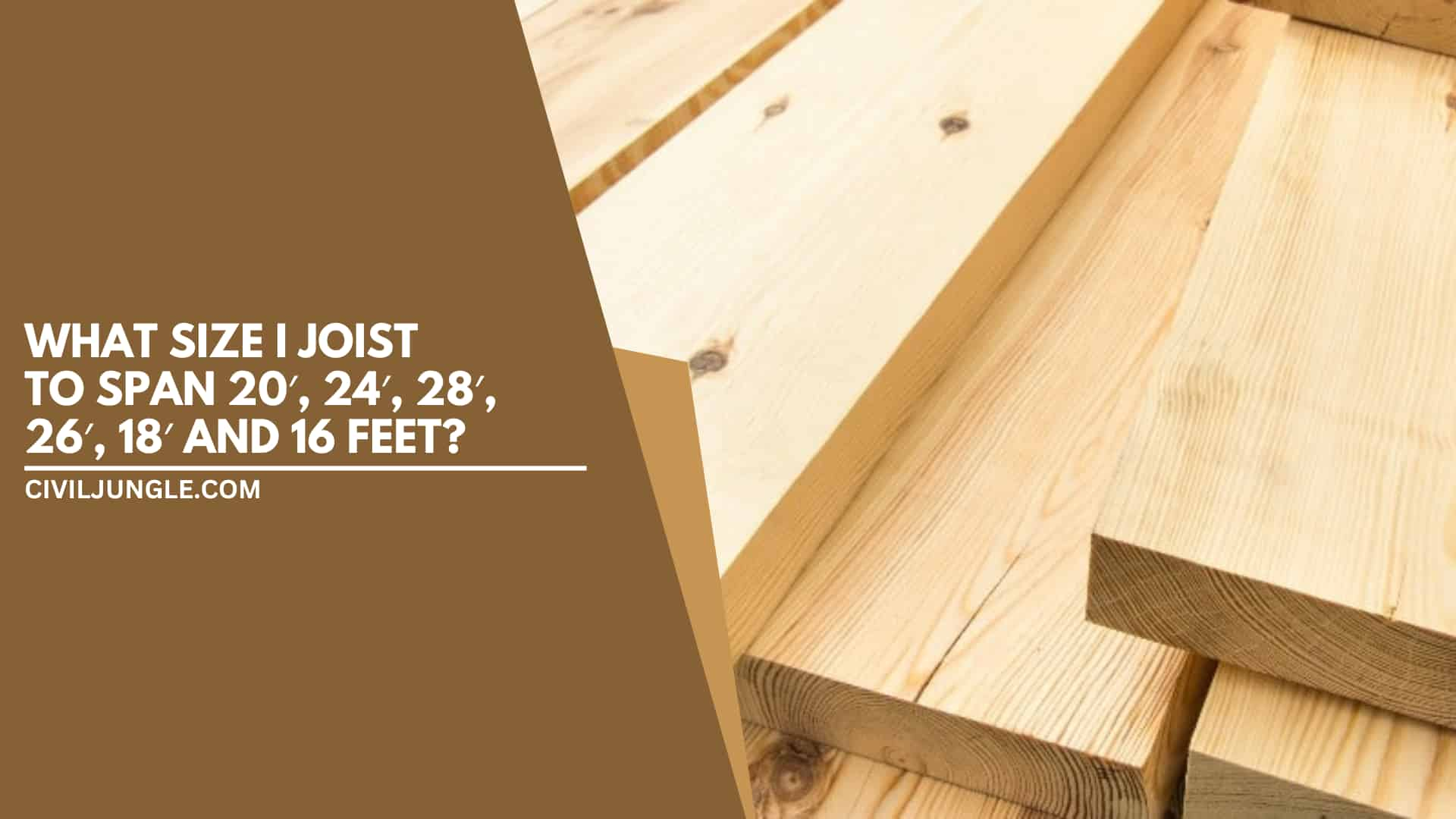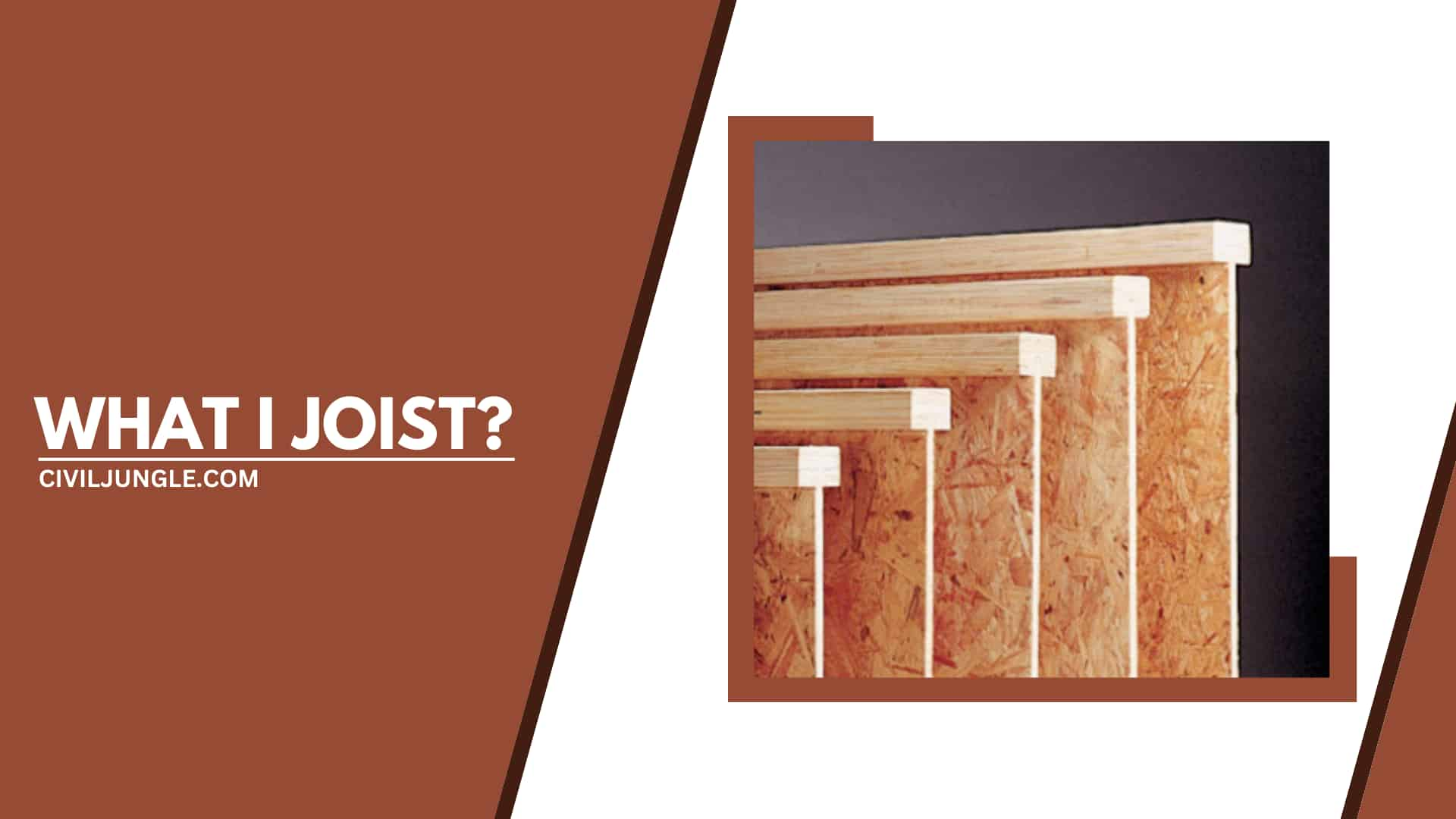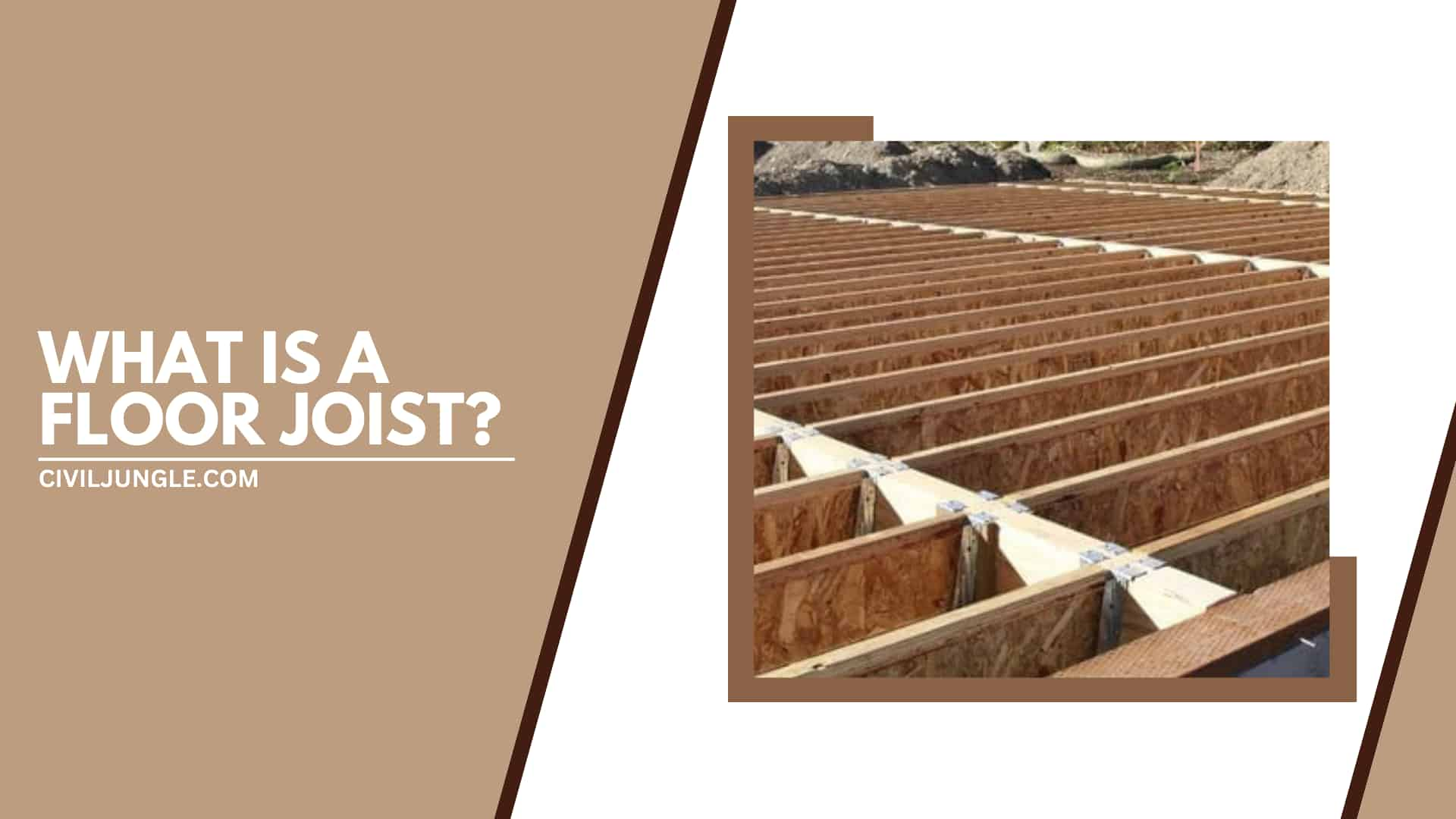What Size I Joist to Span 20′, 24′, 28′, 26′, 18′ and 16 Feet?
Important Point
What measures do I add to extend to 20′, 24′, 28′, 26′, 18′, and 16 feet? What size do I connect with a 20-foot span? What size do I connect with a 24-foot span? What size do I connect with a 28-foot span? What size joist should I use to span 16 feet? What size do I connect to a 26-foot extension?
Joists are essential for construction and remodeling, supporting ceilings, floors, decks, and other load-bearing surfaces.
An I-joist is a wood joist made from machine stress-rated (MSR) lumber or laminated veneer lumber.
which is lighter and easier to handle but can carry heavier loads than dimensional lumber.
These joists have wider flanges, providing a more substantial surface area for nailing and support for floor sheathing.
I-joists are less likely to split, bow, or twist than traditional joists.
When it comes to the anatomy of a deck, joists are part of the deck’s framing system.
Each joist is a series of long, horizontal structures supporting the decking.
While the posts are vertical, joists are placed horizontally across each beam to provide a firm, level surface to lay your decking material.
Joists made of wood or steel.
Use a joist span and spacing calculator to add your desired lumber type, post size, and the required distance between each joist.
Also, Read: What Is Stone | Type of Stones | Uses of Stones
What I Joist?
I-shaped floor joists are essential, lightweight “I” shaped wood components that meet critical performance standards.
I-joists have upper and lower flanges that resist bending, are attached to the ribs, and provide exceptional shear resistance.
I-joist comprises top and bottom flanges, which resist bending, united with webs, which provide outstanding shear.
Joist span refers to the measurement the joist covers between the supporting structures, such as a beam, and the foundation walls.
I-joist the average comprises two main parts: the flange and the web.
The pieces of plywood, lumber, or board between each flange are known as a “web.”
The two pieces of wood placed on the web’s top and bottom are known as flanges.
As the flanges hold the web together, the net keeps each flange in place.
What Is the Standard Deck Joist Span?
Standard deck joist spans can vary depending on the size of your deck and the type of material used to construct it.
Depending on the deck size, whether your joists are 12 inches or 16 inches from the center, and the framing material and size of deck boards used, deck joist spans can vary.
The floor joists’ sizing, span, and spacing are crucial to the house framing.
Spacing floor joists too far from each other means we would need our lesser floor joists to cover the entire flooring.
However, the floor might feel bouncy due to the lack of support underneath it.
Joist spans range from 6 feet, 10 inches to 18 feet.
Use our calculator above to determine the right joist span for your deck based on wood type or material, size, and joist spacing.
Also, Read: What Is Quarrying of Stones?
What Is a Floor Joist?
A floor joist is part of a floor system that acts as a beam, supporting the load bearing on the attached flooring material.
The floor joist sizing, span, and spacing of the requirement: The most common spacing for wood floor joists is 16″.
The most commonly used code for determining the size, span, and spacing of floor joists is the International Residential Code.
Limits are given based on the type of wood used, the grade of wood, and the distance.
According to the 2021 Residential International Code, spacing variations such as 12″, 19.2″, and 24″ are also acceptable.
Code requirements depend on many factors.
Floor joists of the tables follow the criteria recommended in the IRC and typical examples of resulting spacing and long spans.
For a certain period, this gap distance may vary depending on the wood species, grade, and load conditions.
What size do I add to the span of 20′ feet: As a general rule, eye joists made of 2-5/16″×11-7/8″ engineered wood allow a live load of 40 pounds per square foot and extend 20 feet for the dead load.
It yields – ten pounds per square foot at a spacing of 16 inches.
Thus, for a 20-foot span, you would need an I joist measuring 2-5/16″×11-7/8″ instead of the standard 16 inches.
What size do I add to the span of 24′ feet: As a general rule, a joist made of engineered lumber 2-5/6″×14″ spans 24 feet for a live load of 40 pounds per square foot and a dead pack of 10 pounds per square foot, the legs are 16 inches apart.
Useful Article for You
- What Is Composite Wood
- What Is the Difference Between a Shower Pan and a Shower Base?
- What Is Raft
- What Is a Window Panel
- What Is Rebar Made Of
- What Is Crane
- What Is a Frame Structure
- What Is the Measurement for a Queen Size Bed
- What Is Considered Livable Space
- What Is One Way You Can Save Electricity?
- What Is Mdf Mean
- What Is a Bundle of Shingles
- What Is a Gallon of Water Weigh
- What Is Window Sash
- What Is a Sieve Analysis
- What Is the Little Black Diamond on a Tape Measure
- What Is the Difference Between a Bolt and a Screw?
- What Is Overhang
- What Is Sand Blasting
- What Is a Walk in Basement
- Difference Between Lumber and Wood
Thus, for a 24-foot span, you would need a 2-5/16″×14″ size I joist instead of the standard 16-inch spacing.
What size do I add to the span of 28 feet: As a general rule, joists made of 3-1/2″×16″ I-engineered lumber should allow a live load of 40 pounds per square foot for a dead load of 10 pounds per square foot spaced 16 inches apart.
Thus, for a 28-foot span, you would need 3-1/2″×16″ Size I joists instead of the standard 16-inch spacing.
What size do I add to the span of 26 feet: As a general rule, 3-1/2″×14″ sized I joists made of engineered wood can allow a span of up to 26 feet for a live load of a 40 pounds per square foot and a dead load of the 10 pounds per square foot.
When spaced 16 inches. So, for a 26-foot span, you’ll need to measure. I attach other than 3-1/2″×14″ at standard 16-inch intervals.
What size do I add to the span of 18 feet: As a general rule, a joist made of engineered lumber measuring 1-3/4″×11-7/8″.
allows for a live load of 40 pounds per square foot and a span of up to 18 feet for a dead load of 10 pounds per square foot. Thus, for an 18-foot span, you will need 1-3/4″×11-7/8″ joists spaced 16 inches apart.
What size do I add to the span of 16′ feet: As a general rule, A 1-3/4″×9-1/2″ size I joist made of engineered wood can support up to 16 feet for a live load of 40 pounds per square foot and a dead load of the 10 pounds per square foot, except for 16 inches.
Thus, for a 16-foot spacing, you would need 1-3/4″×9-1/2″ I joists instead of the standard 16-inch spacing.
What Size Floor Joist Do I Need for a 16 Foot Span?
Generally speaking, for a 16-foot span, you would need at least 2×6 joists spaced 12 inches on center. However, if you are using a heavier lumber such as a 2×8, you may be able to get away with spacing them 16 inches on center, as these joists can handle more weight than their 2×6 counterparts.
What Is a Joist?
A joist is a horizontal structural member used in framing to span an open space, often between beams that subsequently transfer loads to vertical members. When incorporated into a floor framing system, joists serve to provide stiffness to the subfloor sheathing, allowing it to function as a horizontal diaphragm.
What Is a Floor Joist?
Floor joists are used to support a floor that spans over an open area, normally forming the upper storey in a house. They are placed equidistant and parallel to one another and span between loadbearing walls or where large open spaces are required below between walls and / or structural beams.
What Is a Deck Joist?
A decking joist is a repeated board used as the structural base for your deck frame that is attached to the ledger via galvanized joist hangers. Typically, joists run perpendicular to the house, while the decking on top runs parallel to the house.
What Is the Standard Joist Spacing for a Deck?
Deck joist spacing should never exceed 16″ on center (with the exception of MAX deck boards, which allow for a maximum of 24″ on center). For a more rigid feel, 12″ or less may be preferred.
What Is the Standard Floor Joist Size?
The most common lumber sizes for floor joists are 2×6, 2×8, 2×10, and 2×12. Larger joists can span across wider areas. For example, a 2×6 joist would have a 12-foot, 6-inch maximum span, and a 2×10 joist would have a 21-foot maximum span.
How to Install Floor Joists?
- Plan the layout
- Prepare the subfloor
- Install the rim joists
- Lay out and install the floor joists
- Install bridging
- Cut and install blocking
How Much Are Floor Joists?
A typical price for a Joist is $168 but can range from approximately $18 to $575.
How Much Are Joists?
Wood joists are the most common type of joist used in residential construction. The cost of wood joists can vary depending on the type of wood used and the size of the joists needed. On average, you can expect to pay anywhere from $1 to $3 per linear foot for wood joists.
How to Install Floor I Joists?
- Plan the layout
- Prepare the subfloor
- Install the rim joists
- Lay out and install the I-joists
- Install the subfloor
What Is an I Joist Used For?
I-joists are structural engineered wood products used for framing floors and roofs. The consistency allows for solid performance and smooth ceilings. Like all joists, I-joists are typically used to transfer loads to beams, walls, and the foundation.
How Is a Floor Joist Structured and What Are Its Components?
A floor joist is a horizontal structural element that supports the load bearing on the attached flooring material. It consists of upper and lower flanges, which resist bending, and webs, which provide shear resistance. The pieces of material between the flanges are known as the “web.”
What Is Joist Span and Why Is It Important?
Joist span refers to the measurement the joist covers between supporting structures like beams and foundation walls. It is important to determine the appropriate size and spacing of joists to ensure the structural integrity and stability of the construction.
What Is the Standard Deck Joist Span and How Does It Vary?
The standard deck joist span can vary depending on factors like the size of the deck, the type of material used, and the spacing between joists. It’s important to calculate the right joist span based on these variables.
What Are the Recommended Joist Spans for Different Measurements (20′, 24′, 28′, 26′, 18′, and 16 Feet)?
Refer to the provided information for the recommended joist spans for each measurement: 20′, 24′, 28′, 26′, 18′, and 16 feet.
How Do the Size and Spacing of Floor Joists Impact the Stability of a Structure?
The size and spacing of floor joists are crucial for providing adequate support and preventing structural issues like sagging or bouncing in the flooring. Following code requirements and recommendations is essential.
Can You Provide Examples of Specific I-Joist Sizes for Different Spans?
Refer to the provided information for specific I-joist sizes recommended for different spans: 20′, 24′, 28′, 26′, 18′, and 16 feet.
What Are the Load Requirements for the Recommended I-Joist Sizes?
The recommended I-joist sizes are specified to carry a live load and dead load. For example, for a 20-foot span, a certain size I-joist is recommended to support a live load of 40 pounds per square foot and a dead load of 10 pounds per square foot.
Like this post? Share it with your friends!
Suggested Read-




Leave a Reply